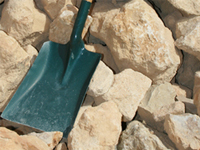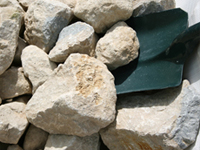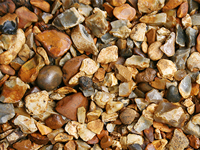How to Build a Rockery Garden
If you wish to create your own natural rock outcrop with your garden, you may instantly be fazed as to where to start. Which rockery stone should I choose? How should I layer the rock? Which plants should I use to be placed within the stone? These questions, and more, are all things you should consider, to ensure a lasting feature in your garden. This information guide aims to give you helpful steps to ensure effective planning for your rockery garden.
Where to build a Rockery Garden?
You may have a very large garden, with an infinite choice of space or a very small space. Regardless of garden size, the most important consideration for placement is to ensure your rockery garden is on a slope in part or full sun. If you have a very flat garden space, you could use build your rockery garden here, however you will need to ensure it blends into your garden space effectively. To add slopes to your garden, you could use Railway sleepers to add height or contours to your flat space – helping give the space depth and visual authenticity.
Try to avoid placing your garden rockery underneath trees - your plants may not survive under the tree’s shade! A rockery alongside a pond or water feature is often very visually effective.
 |
 |
 |
 |
When to Make a Rockery Garden?
Making a rockery garden isn’t the easiest job and requires some heavy work. With this in mind, choosing to make a rockery garden at the height of summer isn’t the best idea. An ideal time would be in an autumnal or wintry day when the ground is dry. Ensure if the ground is moist, to place down matting or board to walk on to avoid unwanted slipping!
Which Rockery Stone?
There are a wide range of stones you could use for your rockery garden – from Basalt, Welsh Green Stone, Slate, York Stone and Cotswold Stone; all are very popular choices. Here at Smiths Bletchington, our Rockery Stone is made from irregular Cotswold Limestone – helping to effectively add texture & colour to any attractive rockery garden.
As a general rule, try to stick to only one type of rockery stone for your garden to ensure consistency and an authentic look. Rough-shaped rocks are ideal for a natural rockery effect – ideal for a traditional, rustic feel home/ garden. Smoother, spherical type stones available at most garden centres tend to be better suited to more modern-styled gardens.
Planning Your Rock Garden
Once you have decided on the space, type of stone and look for your garden, you will then need to start planning its build. The easiest way is to take a piece of squared paper, and draw to scale your projected idea of how your rockery garden / formations will appear within your garden space. For those who are more technologically-savvy, you may wish to sketch this out on your computer to get a better idea. Whichever way you decide to plan, ensure you take a note of the rock sizes to ensure everything is in proportion.
Ordering Your Rockery Stone
When ordering, always check how your stone will be delivered. Here at Smiths Bletchington, we always aim to deliver our rockery stone to as near as possible to your preferred location – depending on the size of access to your site / and of vehicle. For larger, heavier stone, always ensure you can get the stone delivered direct to your garden if you can (lifting can be backbreaking!).
Arranging Your Rockery Stone
As a general rule of thumb, always start at the lowest point of your rockery first, then work your way up to the slope. You could begin by laying an irregular shaped base line of the largest rocks, leaving gaps within the stone to allow space for planting. Ensure each rock is then securely placed, buried preferably two-thirds or at least a half below ground level. Once the rocks are in place and you are happy with its positioning, infill the gaps between the rocks with planting compost (ideally free draining soil made up of equal parts compost / sharp sand or grit). Once layered, and then start on the next level using smaller rocks, making sure adequate space is given for your compost / planting. As you build each layer, be sure to take a step back and have a look at your rockery from different viewpoints to ensure a desired effect.
Which Rockery Plants?
A wide range of plants could you used within your rockery, and these partially depend on the look / feel of your garden space. However, the best plants suited to rockeries tend to be those which grow slow, low and happy to live in drier areas. Before planting, it’s best to place the plants within its pots at each position on the rockery.
Most popular rockery plants include Aubretia, Sedum, Wild Thyme, Dwarf Conifers and Sempervivum.
For a free sample and more details on how to order, please contact us.
Materials that could be used
